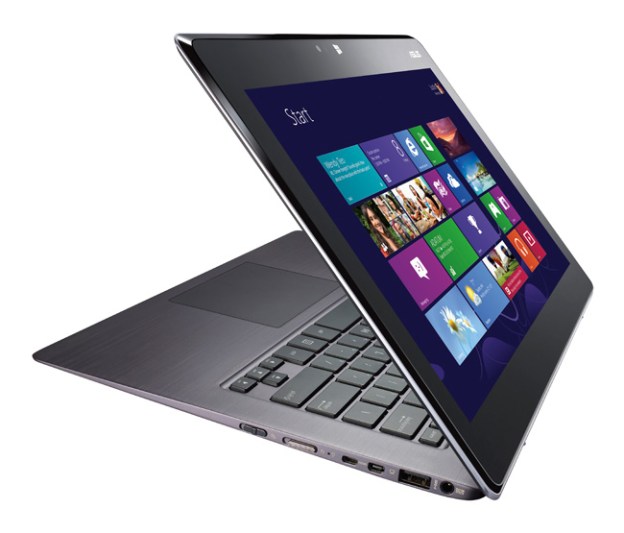
After teasing us back in October, and more recently at CES, we’ve been looking forward to the release of the innovative 13.3-inch Taichi Ultrabook available with a double-sided display. Though we reviewed the smaller 11.6-inch version, the Asus Taichi 21, back in January, Asus is finally ready to ship the larger dual-screen convertible laptop.
Rather than rely on a fancy hinge to transform a laptop into a tablet like the Lenovo IdeaPad Yoga or the Twist, the Asus Taichi adds a second screen (this time with touch!) on the laptop’s cover so the device becomes a tablet when it is closed. Not only that, but you can also use both the laptop and tablet screens at the same time in Dual-Screen Mode, which comes in handy when presentating to a small group.
While its smaller brother has been on the market since October, its poor battery life was a common problem among reviewers – especially in Dual-Screen Mode. In our review, we could only squeeze four hours out of the Taichi 21 when using it purely as a laptop with a single screen, and just one hour and 48 minutes in Dual-Screen Mode.
Engadget is reporting that the 13-inch Taichi 31’s battery life will last up to seven hours of use, so you won’t have to panic if you forgot your power adapter at home. Of course, we’ll have to test out Asus’ claim when we can get our hands on a review unit, but we’re hopeful that the slightly larger Taichi will offer better battery life than its bro.
Otherwise, the Taichi 31 shares pretty much the same guts as the Taichi 21. Both come with two full HD displays at 1920 x 1080 pixel resolution (with the outside touch-capable screen protected by scratch-resistant glass), both use a third-generation Ivy Bridge Intel Core i5 or i7 processor, and both use a solid-state drive. The top model, with the Core i7 configuration, even includes a pressure-sensitive stylus.
Although Asus has yet to reveal the Taichi 31’s price, it will probably be smoewhat more expensive than the $1,300 price tag for the base model of the Taichi 21 (with a Core i5 chip).
Since the Taiwanese’s company’s press release about the Taichi 31 is only concerned with its worldwide availability, we expect the Taichi 31 will need a bit more time before it reaches our shores.


